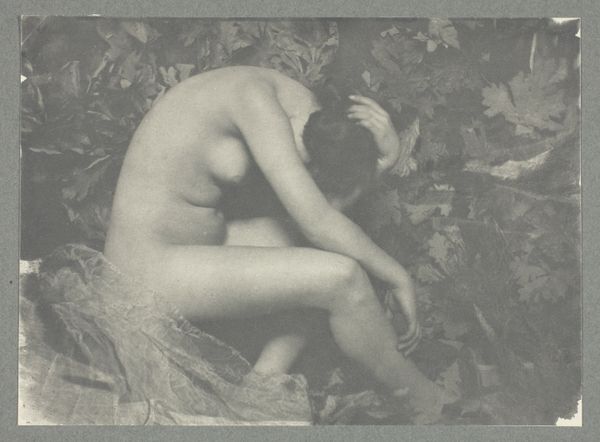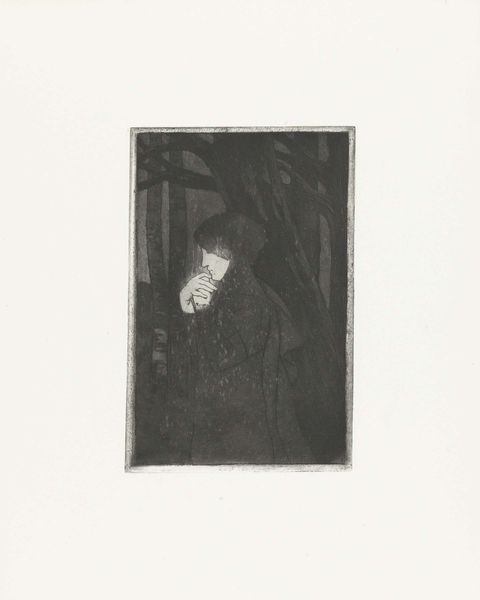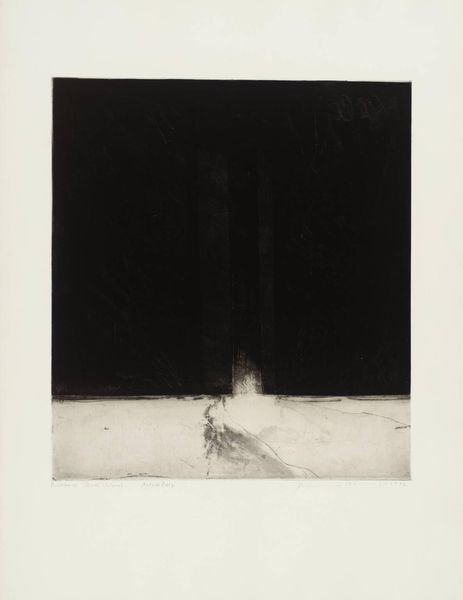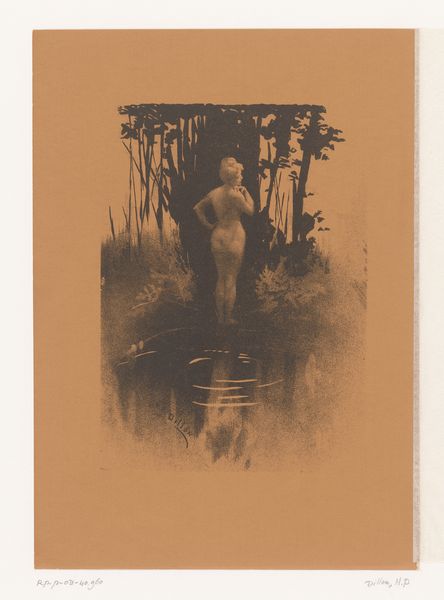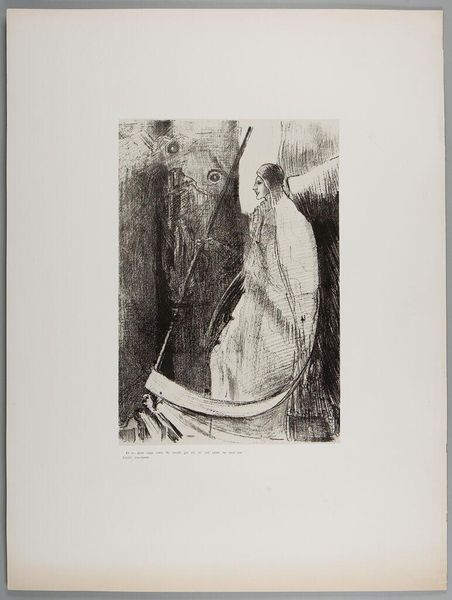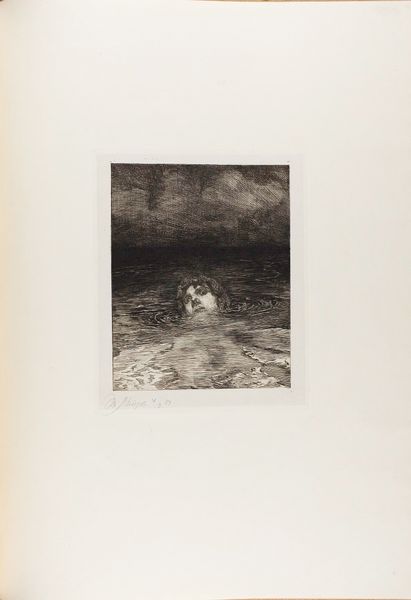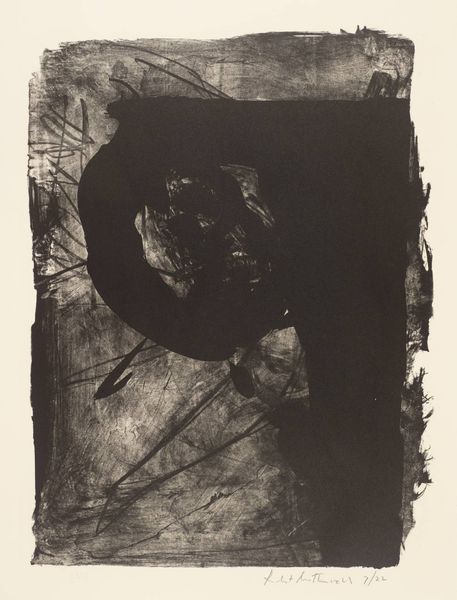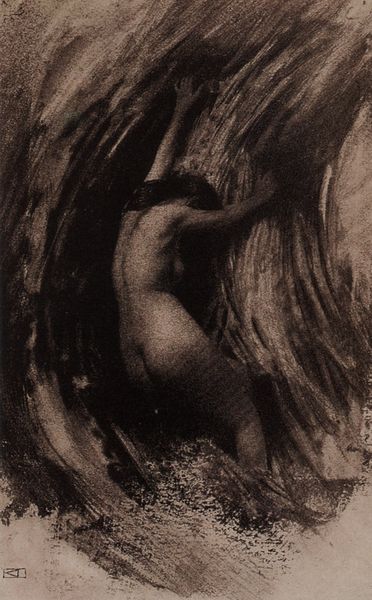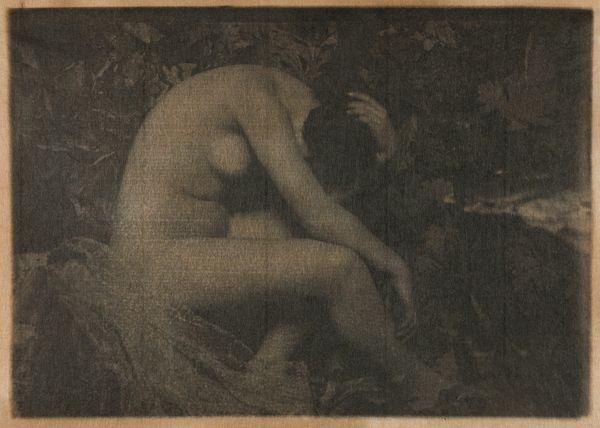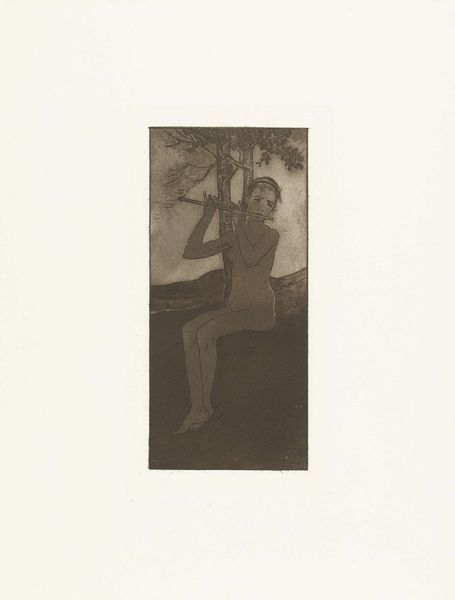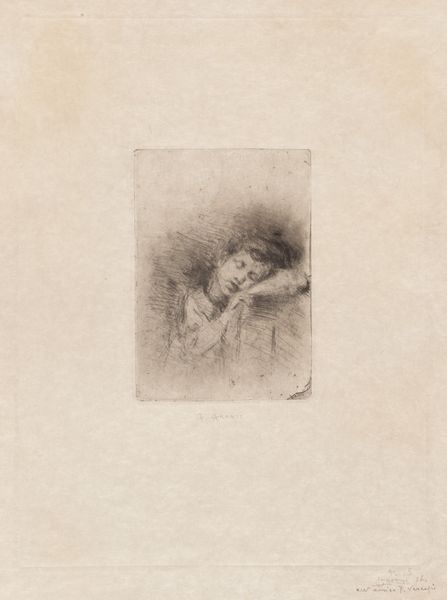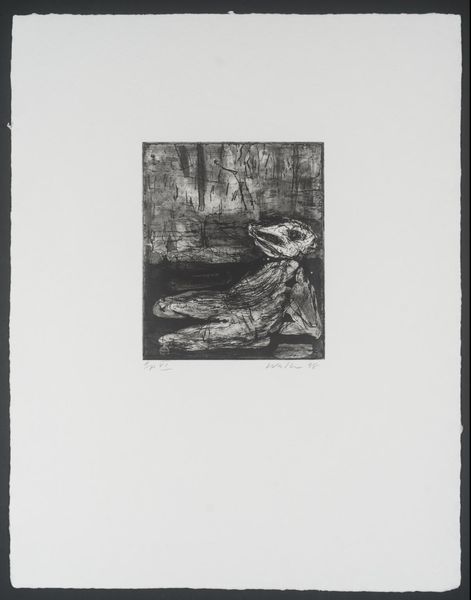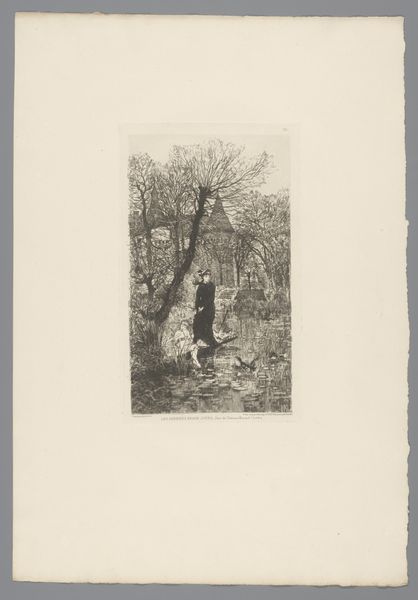
drawing, lithograph, print, etching, paper
#
drawing
#
lithograph
# print
#
etching
#
landscape
#
paper
#
academic-art
#
nude
Dimensions: 240 × 165 mm (image); 425 × 334 mm (sheet)
Copyright: Public Domain
Curator: Let’s take a look at Henri Fantin-Latour's "Standing Bather," created around 1879. He employs printmaking techniques—lithography, etching, drawing on paper. Editor: My first impression is of solitude. The figure is turned away from us, almost blending into the dark foliage. It feels intimate, secretive. Curator: Absolutely. The bathing woman as a subject taps into classical themes, yet here we have this darker, more introspective interpretation. Fantin-Latour, who associated with many symbolist artists, presents the nude figure not as an object of desire, but perhaps an exploration of female identity within the context of nature. Editor: That resonates with me. Consider the printing process itself: lithography demands careful labor, building up layers to achieve depth and texture. The gradations achieved by this method speak to a lived, laborious materiality; here is where the means become the art, revealing the skill, the careful registration, and the work required to create this atmospheric setting, challenging a more elevated tradition for nude figures. Curator: A wonderful point about labor—it underscores the deliberate creation of this secluded, dreamlike realm. Fantin-Latour grapples with societal constraints placed on women through mythological settings where they appear removed from the conventional societal settings of that period. Are we really seeing this bather’s liberation? Editor: Perhaps liberation can be about owning a space even if, like this figure, one’s posture or location remain unfulfilled. We need to consider how Fantin-Latour navigates high art expectations for what nudes do, and how women are seen. He shows us not an idealised, decorative form but someone who perhaps enjoys an introspective interaction with nature; not a passive object. The very choice of etching as a means reinforces accessibility of an intimate moment for contemplation, rather than an uncritical viewing. Curator: You're right. Fantin-Latour prompts us to question and delve into the historical construction of female representation—moving away from objectification and toward a more nuanced understanding. Editor: So by examining both materials, the social context and the production values, the subject invites the viewer to delve beneath the surface... Curator: ...to see an individual, rendered not just as form, but as a nexus of experience and historical context. Editor: Thank you! That changed my viewing for good.
Comments
No comments
Be the first to comment and join the conversation on the ultimate creative platform.
